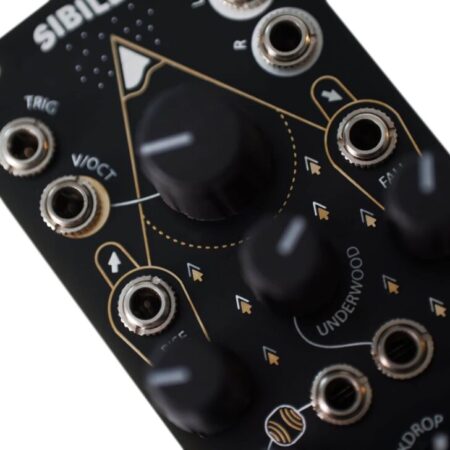Clatters Machines introduces SIBILLA Stereo Digital Oscillator for Eurorack Modular Synthesizers
Clatters Machines has introduced Sibilla, a stereo digital oscillator in an 10HP Eurorack module.
The module sculpts sound with various saw and sine waves, running through intricate delay networks altered by LFOs (Low Frequency Oscillators) and white noise, to create constructive and destructive interferences, enabling ever-evolving soundscapes that can be both droning and/or melodic in nature.

“Living by the sea can be peaceful and inspiring, but also quite stressful as the tourist season reaches its peak and, all of a sudden, a small town doubles its number of citizens,” continues Clatters Machines Co-founder, engineer, electronic designer Michelangelo Nasso. “Those are the moments in which we’re constantly looking for air and a new space that is able to inspire us while calming our nerves! Luckily, we live in a weird region in which a 40-minute drive means the difference between swimming in the sea and hiking at 2000m above sea level, surrounded by semi-barren lands which actually make you forget for a moment that you’re still on planet Earth. One of those magical places is called Monte Sibilla — Sibella Mountain, and our new module tries to pay tribute to it.”
As a stereo digital oscillator, Sibilla’s L/M (left/mono) and R (right) channels are the output stages of two audio feedback loops, each of which is made up of a main sub-sinusoidal wave oscillator and two saw and sine waves with frequencies affected by the generation of (right-channel) harmonics and (left-channel) sub-harmonics. The waves have different phases, with respective offsets constantly affected by minor variations created by two pairs of GRAINS, randomly fluctuating within the waves’ amplitude spectrum and being sampled at a certain speed.
The waves meet each other at a so-called ‘common point’ — where everything happens and changes continuously — together with two white noise sources, creating constructive and destructive interferences that are affected constantly by two LFO movements. Moreover, such interferences are then run into a resonant low-pass filter and distributed to four different delay lines from where they are finally fed back into the audio loops at different time intervals, depending on the GRAINS movement.
Official tutorial video:
Sibilla is available now for €360 (plus VAT, if applicable).

























